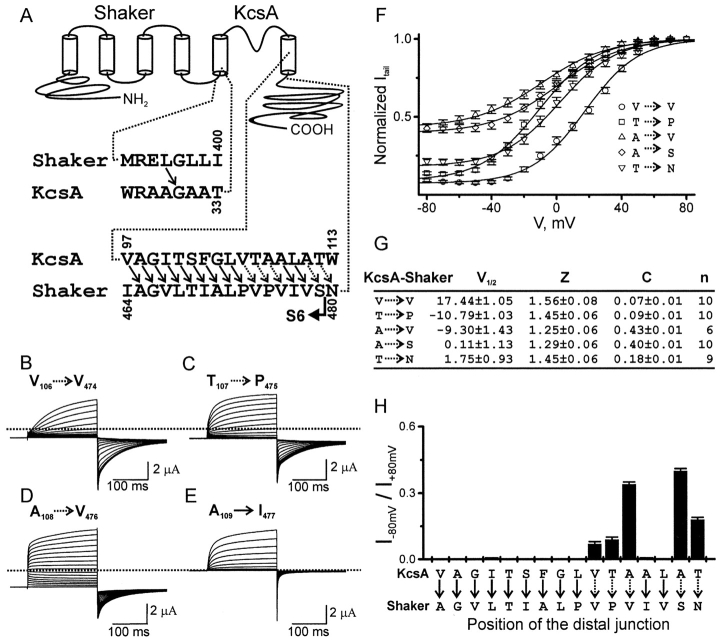XB-IMG-121244
Xenbase Image ID: 121244

|
Figure 3. . Shaker-KcsA chimeras with various distal junctions in S6. (A) Schema of the polypeptide chain topology of a Shaker-KcsA chimeric channel subunit and partial sequences of the parent channels around the splicing sites. All chimeras have the same proximal junction connecting Shaker's L396 to KcsA's G30 as indicated by the arrow. The distal junction is varied across the region, as pictured by the arrows, where the arrow type indicates whether a chimera expresses minimal (solid) or robust (dotted) voltage-independent conductance. (B–E) Current records of chimeric channels with the distal junction at four consecutive positions. (F) G-V curves (normalized tail currents vs. membrane voltage) for all chimeras expressing voltage-independent conductance at negative voltage. The fitted curves correspond to the Boltzmann function with an extra constant, “C,” which accounts for the voltage-independent conductance at negative voltage. (G) Values of V1/2 (mean ± SEM), Z, and C from the fits in F, where n is the number of oocytes examined. (H) The ratio (mean ± SEM, n = 5–11) of the currents at −80 and 80 mV versus the position of the distal junction in the chimeric constructs. Image published in: Lu Z et al. (2002) Copyright © 2002, The Rockefeller University Press. Creative Commons Attribution-NonCommercial-ShareAlike license Larger Image Printer Friendly View |
